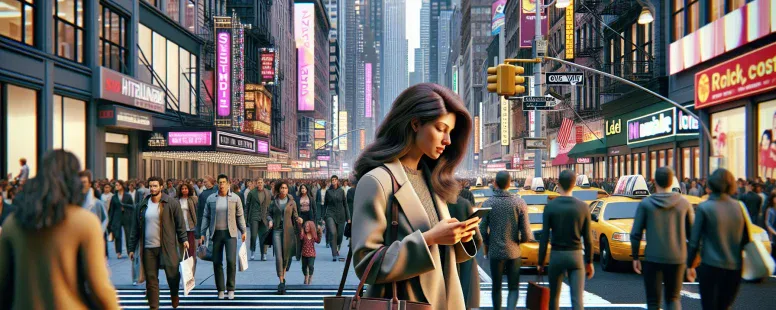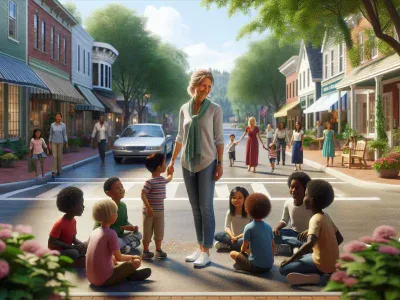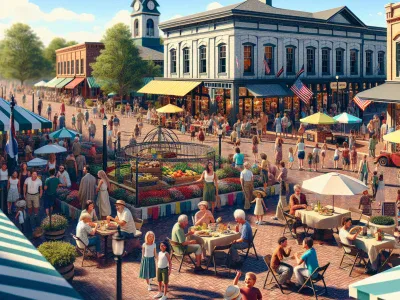Town and City Difference: Exploring Lifestyle, Community, and Opportunities
Picture this: the sun sets over a quiet town, casting long shadows on charming cobblestone streets, while in the city, neon lights flicker to life as crowds buzz with energy. Towns and cities may share common ground, but their rhythms couldn’t be more different. One offers serene simplicity; the other thrives on fast-paced excitement. how these contrasting lifestyles shape your daily experience? From the hum of traffic to the rustle of leaves in a small park, each setting has its own unique charm and challenges. Whether it’s the close-knit community of a town or the endless opportunities of a city, where you live influences everything from your pace of life to your sense of belonging.
Choosing between town and city living isn’t just about location—it’s about finding what resonates with your personality and priorities. Let’s explore what truly sets these two worlds apart.
Understanding The Town And City Difference
Towns and cities often differ significantly in their size, population density, and infrastructure. Towns typically have smaller populations, ranging from a few hundred to several thousand residents, while cities house hundreds of thousands or even millions. These distinctions affect the availability of amenities, transportation systems, and housing options.
In towns, community bonds are usually stronger due to fewer people and closer interactions. Residents often know each other personally; for example, local store owners might greet customers by name. In contrast, cities foster anonymity due to their large populations. Urban dwellers may not recognize neighbors living in the same building.
Economic opportunities vary between towns and cities as well. Cities attract diverse industries like finance, technology, and entertainment because of their larger workforce pools and advanced infrastructures. Meanwhile, towns rely on smaller-scale businesses such as agriculture or family-owned shops for economic sustenance.
Environmental differences also play a role in distinguishing these settings. Towns generally offer cleaner air and more green spaces since they face less industrial activity compared to cities with higher pollution levels caused by factories and traffic congestion.
Accessibility shapes daily life differently too. Public transit systems like subways dominate cityscapes but are scarce in towns where personal vehicles are common for commuting purposes.
Understanding these contrasts helps clarify why individuals choose one over the other based on lifestyle preferences or career aspirations.
Population And Density
Population and density significantly distinguish towns from cities, shaping their lifestyles, infrastructure, and social interactions.
Town Population Characteristics
Towns generally have smaller populations, often ranging between 1,000 to 20,000 residents. This lower density fosters closer-knit communities where personal connections thrive. For example, a town like Middlebury in Vermont (population ~9,000) reflects this intimacy with its local events and strong civic involvement. You might find yourself recognizing most faces at the grocery store or community center.
Towns typically feature less crowded environments due to their low population density. Homes are usually spaced farther apart, creating quieter neighborhoods. In small towns across the Midwest or New England states, spacious yards and open fields dominate residential areas. But, these benefits may come with fewer amenities compared to more populous urban areas.
City Population Characteristics
Cities host larger populations that can exceed millions; for instance, New York City has over 8 million residents as of recent estimates. This high population results in greater diversity but also creates anonymity among individuals. Unlike in towns where familiarity prevails, you’re less likely to know your neighbors in densely populated urban districts like Manhattan.
Urban areas exhibit higher population density measured by persons per square mile or kilometer. Cities such as San Francisco (~18K people per square mile) showcase vertical housing developments like skyscrapers to accommodate growing numbers within limited spaces. The bustling streets filled with pedestrians highlight how densified environments influence daily life.
Infrastructure And Development
Towns and cities differ significantly in infrastructure and development, shaping lifestyles and opportunities. These contrasts influence transportation, housing, and layout.
Transportation Systems
Cities prioritize public transit systems like subways, buses, and trams to accommodate high population density. For example, New York City’s subway system operates 24/7 across 665 miles of track. This accessibility reduces car dependency but can lead to overcrowding during peak hours.
In towns with smaller populations, personal vehicles dominate due to limited public transport options. Middlebury relies on local bus services like Addison County Transit Resources but lacks the extensive networks seen in urban areas. The reliance on cars increases fuel costs but provides flexibility for residents.
Biking paths are more common in towns where traffic is lighter and distances shorter. In contrast, city bike-sharing programs such as Citi Bike offer eco-friendly alternatives even though navigating heavy traffic congestion.
Housing And Urban Layout
Housing density varies sharply between towns and cities. Urban areas feature high-rise apartments or condominiums to maximize space for millions of residents within constrained boundaries. Manhattan’s skyline exemplifies this vertical expansion but often sacrifices living space per unit.
Towns typically have horizontal layouts with single-family homes or duplexes spread over larger plots of land. This sprawl creates quieter neighborhoods but may limit proximity to amenities compared to cities where shops or offices integrate tightly into residential zones.
Urban planning diverges too; city grids focus on efficiency while town layouts reflect historical growth patterns. Cities incorporate mixed-use developments blending commercial spaces with residences—a trend less prevalent in rural settings prioritizing distinct zoning classifications.
Lifestyle And Community
Towns and cities offer contrasting lifestyles and community dynamics, shaped by population size, social structures, and daily routines. These differences impact how you experience pace of life and interact with others.
Pace Of Life
The pace in towns tends to be slower due to smaller populations and less congestion. You might notice more relaxed mornings, fewer traffic jams, and quieter streets. For example, in a town like Middlebury, Vermont, residents often enjoy leisurely walks through local parks or unhurried conversations at coffee shops. This unpressured rhythm creates opportunities for mindfulness but may lack the excitement some seek.
Cities have a faster tempo driven by larger populations and bustling economies. Your mornings could involve rushing to catch public transit or navigating crowded sidewalks. In New York City’s financial district during peak hours, the energy is palpable as professionals hurry between skyscrapers. While exhilarating for many, this intensity can lead to stress if you’re not accustomed to such environments.
Social Interaction
Social connections in towns are typically close-knit due to smaller networks where familiarity thrives. You’re likely greeted by name at local stores or meet neighbors frequently at communal events like farmers’ markets or parades. This intimacy fosters trust but might feel restrictive if you prefer anonymity.
In cities, diversity enhances interaction possibilities but reduces personal familiarity among individuals due to high density. While dining in Manhattan’s ethnically varied neighborhoods introduces you to cuisines from around the globe—like Ethiopian injera or Korean bibimbap—it also highlights transient relationships where people come together briefly before moving on.
Economic Opportunities
Economic opportunities differ significantly between towns and cities due to variations in population density, infrastructure, and industry presence. These differences shape the types of jobs available and the potential for career growth.
Employment Options In Towns
In towns, employment options often focus on small-scale enterprises and local industries. Agriculture, retail businesses, healthcare facilities like clinics, and educational institutions such as schools dominate the job market. For example, a town like Middlebury may offer roles in community-oriented sectors like farming cooperatives or locally-owned stores.
Opportunities in manufacturing or specialized trades can also exist but are limited by the smaller industrial base compared to cities. Networking is more personal in towns since residents likely know key employers personally. While this creates trust-based hiring practices, it limits exposure to diverse job markets.
Career Opportunities In Cities
Cities provide a broader spectrum of career possibilities across multiple sectors such as technology, finance, entertainment, healthcare research hubs, and multinational corporations. High-density metropolitan areas like New York City host global headquarters of companies including JPMorgan Chase (finance) or Google (technology). These dense ecosystems foster innovation and competition.
Advanced public transit systems connect urban professionals to workplaces efficiently even if they reside far from central business districts (CBDs). But challenges include higher living costs that offset salary advantages especially in regions with elevated housing expenses e.g., San Francisco’s tech scene.
Environment And Surroundings
Towns and cities differ significantly in their environment and surroundings, shaping how you experience daily life. These differences influence air quality, green spaces, and overall living conditions.
Nature And Open Spaces
Towns typically offer more access to nature and open spaces. You often find parks, forests, or farms within short distances from residential areas. For example, Middlebury in Vermont has vast green landscapes that encourage outdoor activities like hiking or picnics. These natural settings contribute to cleaner air due to lower industrial presence.
In contrast, cities prioritize infrastructure over greenery. Urban parks exist but are often smaller and crowded; Central Park in New York City is a notable exception with its 843 acres providing relief amidst urban density. But, finding quiet spots can be challenging as these areas face high foot traffic.
Urbanization And Pollution
Cities exhibit higher levels of urbanization, leading to increased pollution from vehicles and industries. Air quality indexes in cities like Los Angeles frequently show elevated pollution levels due to smog caused by heavy traffic congestion. Noise pollution also becomes a concern as constant activity generates sound disturbances.
In towns, fewer vehicles reduce noise and air pollutants. Industrial activities are minimal compared to urban centers—resulting in healthier surroundings for residents who value peace over convenience found in bustling cityscapes.
Conclusion
Deciding between living in a town or city comes down to your preferences and priorities. Each offers unique advantages, from the close-knit community of towns to the diverse opportunities and fast-paced energy of cities. Whether you value tranquility or thrive in a bustling environment, understanding these differences helps you choose the lifestyle that suits you best.
- Who Is Better Messi or Ronaldo? A Deep Dive into Football’s Greatest Rivalry - October 29, 2025
- Pros and Cons of Partnerships: Key Benefits and Challenges to Consider - October 29, 2025
- King vs Queen Size Bed: An In-Depth Comparison for Your Perfect Mattress Choice - October 29, 2025







